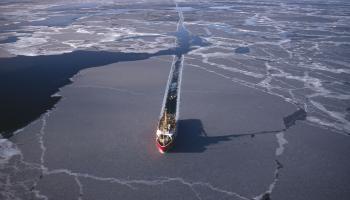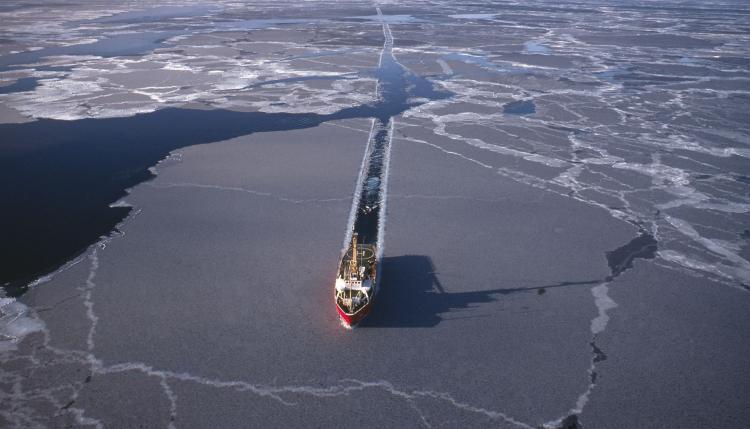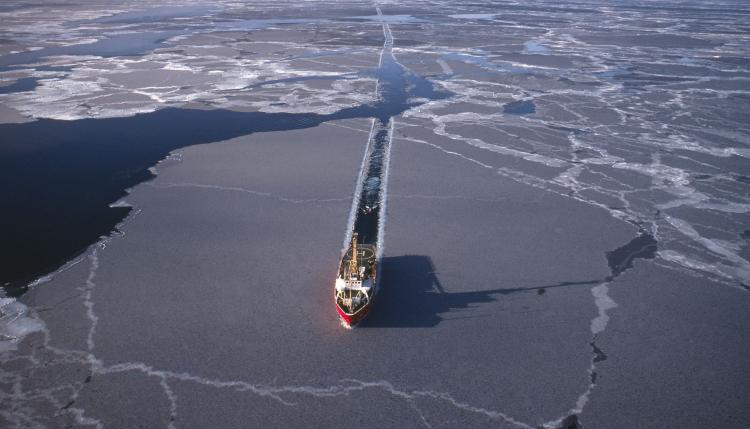Last week’s decision giving the green light to seismic testing in pristine Lancaster Sound in Canada’s Arctic has sparked controversy in local communities where officials and Inuit groups are unanimously opposed to the project.
The decision has raised fears that plans to designate Lancaster Sound as a national marine park may be delayed if oil and gas deposits are found. There are also concerns about the possible impact the noisy tests would have on the region’s rich marine life.
For two months between July and October, the Geological Survey of Canada wants to carry out seismic testing in Lancaster Sound, Jones Sound, and Baffin Bay. This would include firing intense underwater sound waves from air guns to detect oil under the seabed.
After screening the federal project, the Nunavut Impact Review Board (NIRB) told Nunavut Environment Minister Daniel Shewchuk the proposal can be processed without a detailed review. Shewchuk must now decide whether the testing can go ahead.
“All Inuit are worried about it, all the communities are worried about it—the impact of the seismic testing, how will it impact immediately and how it might impact over the long-term,” says Okalik Eegeesiak, president of the Qikiqtani Inuit Association (QIA).
“The recent oil spill in the Gulf of Mexico is evidence that this is a major concern.”
The association, which represents the interests of the Inuit of the Baffin Region, High Arctic, and Belcher Islands, signed a Memorandum of Understanding with Parks Canada last December.
That was when Parks Canada announced a $5 million feasibility study, in collaboration with QIA and the Nunavut government, as part of the creation of a new national marine conservation area in Lancaster Sound, located at the eastern entrance of the Northwest Passage.
The move, says Eegeesiak, is at odds with the proposal to explore for oil and gas in the ecologically sensitive area.
“They are two different focus areas and it’s a major concern for us that the government is trying to do both.”
Powerful Sound Waves
Surrounded by 400-metre cliffs and spectacular fjords, Lancaster Sound is one of the richest marine mammal areas in the world. During the summer months it is home to most of the world’s narwhal and a third of North America’s belugas. The sound is also frequented by bowhead whales, an endangered species, as well as ringed seals, harp seals, and walrus.
The testing would include 600 hours of underwater air gun blasts fired at one-minute intervals. Christopher Debicki, the Nunavut Projects Director of the Pew Environment Group’s Oceans North Canada program, says this could have a devastating effect on whales’ sensitive hearing and sonar navigation.
“Seismic blasts carry through the water for hundreds of kilometres and have been known to cause permanent hearing loss and disrupt feeding, migration, social bonding, reproductive success, and predator avoidance, and have been associated with whale strandings,” he told the NIRB during the public comments period in April.
The testing could cause marine mammal populations to divert their course, interfering with their all-important migratory patterns, Debicki told The Epoch Times. With Lancaster Sound being the only eastern entrance to the Arctic Archipelago, this could cause problems for the mammals.
“The timing for whales as they’re exiting those waters is fairly important because by late September or October the waters in that region are beginning to freeze again and some of these populations don’t do well if they get frozen in, obviously.”
Hunters and trappers organizations in the region are worried the tests will scare off the wildlife they depend on for a living.
In its decision, the NIRB said “it appears that there has been a lack of coordination between Geological Survey of Canada and other federal government departments when designing and communicating this project proposal.”
Debicki says the government is “sending a very mixed message” with its plans to both create a conservation area in the sound and explore for oil and gas.
“We are calling for a clear statement from the federal government that there is no intention to open up Lancaster Sound or the Lancaster Sound region to any drilling activities,” he says.
Oil and gas drilling and energy exploration would be banned in the sound if it is designated as a conservation area.
Formal Review Requested
Environment Minister Jim Prentice, also the minister responsible for Parks Canada, has said that the proposed testing is just a step on the way to making Lancaster Sound a protected area.
“Lancaster Sound is an incredibly rich, ecologically-sensitive area. Part of the process that we follow any time we set aside land in Canada as a national park or a national marine conservation area is to survey all of the resources that we have,” he told reporters.
“We followed the same process in the Nahanni and everywhere else. We simply need to know what we’re dealing with before we designate lands as national parks.”
Prentice said the seismic testing won’t impede progress toward making Lancaster Sound a marine park. He also said there’s “no indication” it would be detrimental to wildlife.
In its review, the NIRB recommended that all air gun start-up procedures include a “soft start/ramping up” period and that “air guns must be shut down if any marine mammal enters or is anticipated to enter the 1,000-metre safety zone.”
The project is part of the $100 million federal “Geo-mapping for Energy and Minerals” program designed to promote the discovery and exploitation of Arctic mineral and energy resources.
Debicki questions the need for the tests, saying extensive seismic surveying of Lancaster Sound was carried out in the 1970s and ‘80s.
“We haven’t seen anything to suggest to us that there isn’t already sufficient seismic data out there to provide and offer an assessment in the context of creating a marine conservation area,” he says.
Eegeesiak notes that Natural Resources Canada has planned a community consultation tour only after the NIRB issued its approval of the testing. She hopes Shewchuk will seek a detailed review and allow the submission of further public comments at the end of the tour.
“We wrote to the minister last week urging him to request a formal review before it’s approved, so it’s in the Government of Nunavut’s hands right now.”







